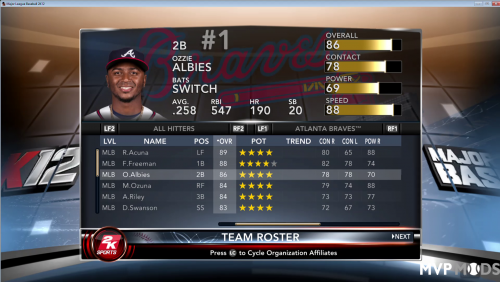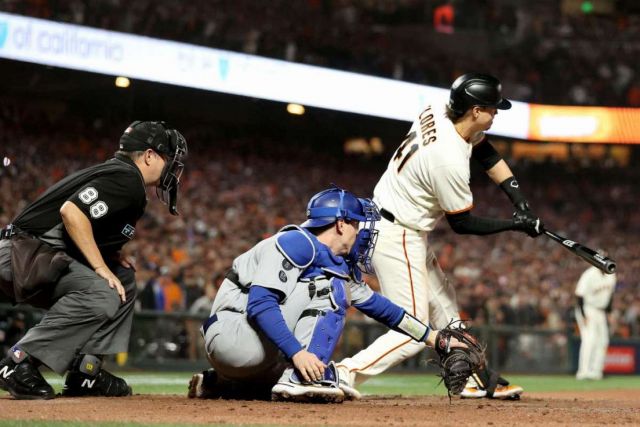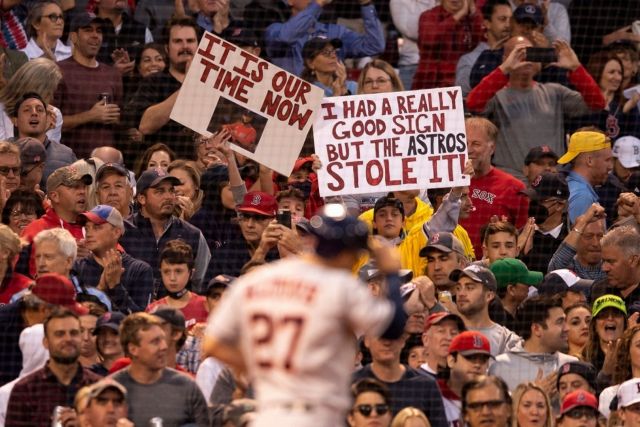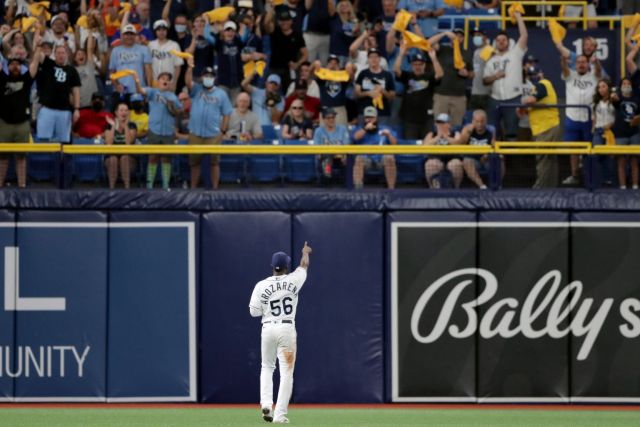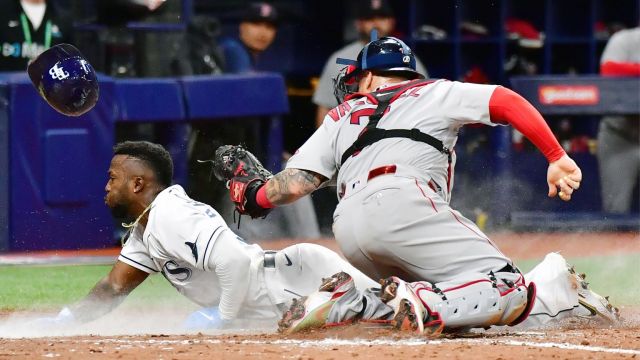-
Posts
21424 -
Joined
-
Days Won
82
Content Type
Profiles
Forums
Downloads
Everything posted by Yankee4Life
-
8 of 10, 77 seconds. Damn.
-
I got lucky today. The questions were too easy.
-
10 out of 10. 46 seconds. Not bad but it can be beaten. The category today was easy baseball questions and they were not kidding.
-
6 out of 10, 80 seconds. Wow. 😕
-
10 out of 10 for easy baseball questions. 62 seconds. I m not kidding. They were easy. Someone's going to beat my time.
-
5 out of 10 again, 66 seconds. If any of you miss question three you should hang your head in shame. 😀
-
You beat me by three seconds. 👍
-
5 out of 10, 117 seconds. Bad!
-
Yesterday we all answered 5 out of 10 right but Muller_11 did it in the shortest amount of time and that made him the winner. Today I got 4 out of 10 in 93 seconds. I think that can easily be topped.
-
For veterans of this great website this is nothing new but it has been forgotten over the years and I think it’s kind of a shame since this is a fun thing to do. Mvpmods has its own sports trivia website and it is located right here. We started it up in 2009 and the people that were around back then really enjoyed it and in 2015 I made a revival thread to let people know that it was still around and after that I really got myself heavily involved in my online photo albums that seem to be hit only with me and the reflection I get in the mirror every day. All you have to do is register (it’s free of course) and answer the ten questions they have and come back in here and post your score and how long it took. I notice that every time they have an easy baseball quiz your score will be a high one unless you are unaware that Joe Dimaggio played for the Yankees. In that case you are in trouble. I figured with the World Series ending tomorrow or Wednesday that this will something to occupy us during the long off-season. Have fun. My score today? 5 out of 10 and it took me 124 seconds to do. I guarantee a lot of people will beat that.
-
-

Elia's 2021 Post Playoff Roster Demo (3 Teams complete) make sure to backup!
Yankee4Life commented on eliamvpmod's file in Rosters
-
To me, this is one of the biggest plays in this year's post-season. What if the Giants had won? Would they have played the Braves tougher? The season series was 3 - 3. The Braves won the season series 4 - 2 against the Dodgers. Wilmer Flores of the San Francisco Giants strikes out on a checked swing for the final out of the game against the Los Angeles Dodgers during the ninth inning in game 5 of the National League Division Series at Oracle Park on October 14, 2021 in San Francisco, California. The Los Angeles Dodgers beat the San Francisco Giants 2-1.
-
Oh!!! So that means they played like the Yankees? 😀
-
Exactly what I was thinking. Red Sox fans, at least nine out of ten of them will rub it in your face when their team wins. I wasn't comfortable rooting for Houston but it was damn better than rooting for Boston. Here's a big reason why I don't have time for the average Red Sox fan. Back in 2004 when they won their first World Series in eighty-six years we had new users join up here on the site with Red Sox user names such as Manny24, Pedro, Papi, etc, etc and all of them claimed to be "lifelong" Red Sox fans. Yeah, sure they were. Bandwagon fans, yes. Lifelong? Not a chance. Maybe fans from the last few months of the season but that's about it. Believe it or not I have talked to many pretty good Red Sox fans in here. Boston has had an insane amount of luck for a long time now with their major sports teams and I am just patiently waiting for it to end.
-
I'm glad you liked them. I consider it a treasury of baseball history. If you have not already listened to it I recommend Game six of the 1936 World Series. The Yankees scored seven runs in the ninth to win the series. Joe Dimaggio, Bill Dickey, Lou Gehrig, Tony Lazzeri and Lefty Gomez are playing for the Yankees and Bill Terry, Mel Ott and Gus Mancuso are playing for the Giants. This is when baseball was baseball.
-
Oh, don't get me wrong. It doesn't bother me at all that they are gone. They got to start somewhere and I am just curious to see what players will go too. I think it is also a panic move. But they have to start somewhere.
-
Phil Nevin and Marcus Thames were let go by the Yankees. Like that is supposed to fix everything.
-
I waited a few days to post this because to be honest I have been catching up on my sleep. Whatever day it was that the Yankees lost in Boston it doesn't matter now but since that loss I have been sleeping very well because finally the final chapter in this terrible 2021 season is done. Don't misunderstand at all and just take this for what it's worth. I did not want them to lose the wildcard game and especially to that particular team but at the same time I expected them to lose because all you have to do was watch them play all year and you knew something was going to go wrong. I don't know what happened with the success of 2019 and how it morphed into a lazy and one-dimensional team that they are at the present time. This is a ballclub that from top to bottom is a lousy hitting team. And you might say to yourself but they have such good hitters and that's true but they all try for the homerun every single time they are at bat and good pitchers are always able to take advantage of it. If you are looking for a team that can't hit, strikes out way too much, makes too many errors and does not know how to run the bases then look no further because these guys are just for you. And now we head in to another off-season that is going to be built on excuses and promises. Nobody and I mean nobody looks at the Yankees like the Yankees anymore. No one is afraid of them and teams like Tampa Bay lick their chops when they have to play the Yankees. Get your head around the sad fact that the Kansas City Royals have been to the World Series two times since the Yankees in 2009. Kansas City! The only people that live there are the ones that have to. Many changes need to be made. Okay, no kidding. But where to start? Behind the plate is as good as any. If the Yankees decide that watching Gary Sanchez for a 162 game season is worth bringing back for another year that I am first going to cancel my MLB account and stop watching them altogether because this guy has worn out all his chances. I don't wish for anything bad to happen to Sanchez but if he ends up getting on the wrong plane that lands in North Korea instead of the Dominican Republic I would care less. Luke Voit? If they don't sign Anthony Rizzo than this guy can get lost. He gets hurt too much. And before they give Gleyber Torres a new contract they should see if he has a pulse first. Brett Gardner has to go. The guy did nothing but so did so many others. Clint Frazier? What the hell? He gets handed the left-field job and then he handed it right back to them. Pitchers? Big deal that they got rid of Andrew Heaney. Even the school of the blind saw that coming. I don't expect them to contend next year because they have too many issues and I think Aaron Boone is part of the problem too but if he comes back that is anyone's guess. Spring training is only a few short months away. We get through this winter and there it is. So, that is something I look forward to. But the first time you hear any Yankee say that they have a "championship ballclub" you should laugh in his face because he is flat out lying to you.
-
Me too. Tampa hits and runs, mixes and matches well, doesn't always go for the home run all the time, etc. In other words what a winning team does.
-
Well I think I made a link to the wrong article. My fault entirely. I did write it past midnight so that's the only excuse I have. Also it is not worth it for me to look for the correct one right now because it's over and done with. Yes it was a playful one and it also had zero to do with the game and more to do with the city. Those are the kind of articles that when you read them they make you laugh a little but then you quickly forget about them. Sorry I responded so late. My internet was down. No I don't. And the only one with a hard on around here is you with anything I post about. You'll do anything to get under my skin because that's the kind of person you are. Tatis is not the new Bryce Harper because I actually want him to succeed. I want Harper to fail and fail miserably. I want Philadelphia to never experience a winner as long as he is on the team and I will never root for him. If you take that personally, that's wonderful. It wasn't meant that way but go ahead make it all about yourself. I say something about Harper and you take it personal. I want to see the Padres win out in the NL West and for Tatis to do well. But I won't turn a blind eye and not notice that he is a hot dog and a showoff who seems to think he is bigger than the game. Still got that hard on? Good. I think I am allowed to talk about baseball without running what I want to type past you. What would be a shock is if you mind your own business and stop trying to bait me. I can only ask this as nice as possible. I don't need or want this back-and-forth with you. You don't seem to mind it but I do. Do NOT reply in here. This is done. ................................................................................................................................................................................................................................................................. I reluctantly have to admire Tampa and am hoping they can win two more games in a hurry. Game one hero. A steal of home!!
-
Well, me neither but the fact that these idiots are out there and they enjoy this. They'd be the first to raise hell if you ragged on them.
-
Hey folks, gather around. Real baseball talk here. Surprising no one the Padres fired manager Jayce Tingler. A team that was expected to compete for the N.L. West title ended up four games under .500 in 2021 but at least their shortstop lead the league in poses and pointing up to the sky which should amount to something. The Yankees face tough decisions in the off season. In other words, who to blame and who goes? As usual Boston knows how to rub it in. How does Tampa keep doing it? Here's a hint. They watch what the Yankees do and then do the opposite..



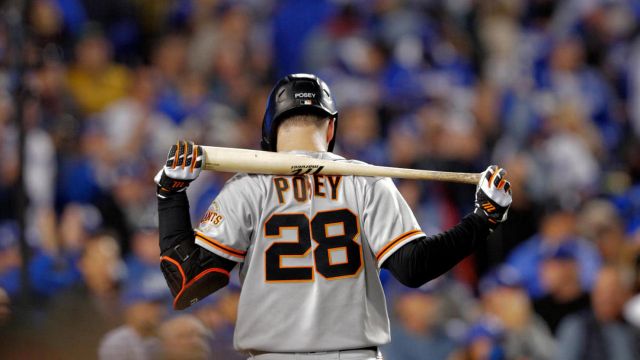



.thumb.png.517f80a45d33e73fb80074cc3d867acf.png)
